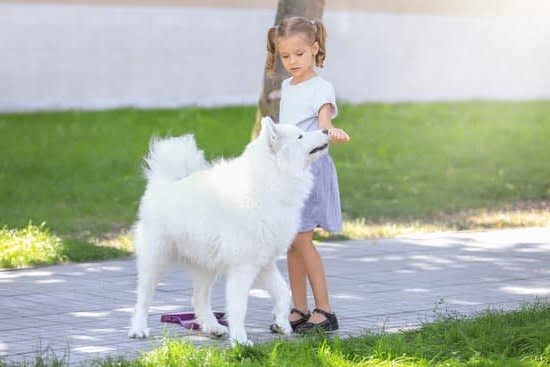Are you looking to add a fun and exciting activity to your dog’s routine? Look no further than frisbee tricks. In this article, we will guide you through the process of training your furry friend to perform impressive frisbee tricks. From choosing the right frisbee for your dog’s size and skill level to troubleshooting common challenges in frisbee training, we’ve got you covered.
Training your dog to do frisbee tricks is a great way to bond with your pet while keeping them active and engaged. In this comprehensive guide, we will show you how to train your dog to do frisbee tricks from start to finish. We will cover the importance of basic obedience training as a foundation for frisbee tricks, as well as introducing advanced tricks such as jumping and twirling.
Before diving into the training process, it’s important to ensure that you have the right equipment and mindset for success. Positive reinforcement and patience are key elements in training your dog for frisbee tricks.
Additionally, safety tips for practicing frisbee tricks with your dog will be provided to keep both you and your pet safe during training sessions. So get ready to have some fun with your canine companion as we embark on this exciting journey of frisbee trick training.
Choosing the Right Frisbee for Your Dog’s Size and Skill Level
When it comes to training your dog to do frisbee tricks, choosing the right frisbee for your dog’s size and skill level is crucial. Here are some tips to help you select the perfect frisbee for your furry friend:
- Size: Consider the size of your dog when choosing a frisbee. Smaller dogs may struggle with a standard-sized frisbee, so opt for a smaller one that they can easily grab and carry. Larger dogs may need a larger, more durable frisbee that can withstand their strong bites and chews.
- Material: Look for frisbees made from soft, flexible materials that are gentle on your dog’s teeth and gums. Avoid hard plastic frisbees as they can cause injury to your dog’s mouth.
- Weight: Choose a lightweight frisbee that is easy for your dog to catch and carry. Heavy frisbees may be difficult for some dogs to handle, especially during training sessions.
Once you have selected the right frisbee for your dog, it’s important to assess their skill level before starting training. Whether they are new to catching a frisbee or an experienced player, consider these factors when choosing the appropriate frisbee:
- Beginner dogs: Start with a soft, lightweight frisbee that is easy for them to catch and carry. Look for smaller sizes that are suitable for beginners.
- Intermediate dogs: As your dog advances in their training, you can transition to a more durable frisbee made from tougher materials. They should now be comfortable catching and carrying the disc.
- Advanced dogs: For dogs who have mastered basic catching and retrieving skills, consider introducing specialized frisbees designed for longer throws and advanced tricks. These discs are typically heavier and more aerodynamic.
By carefully selecting the right frisbee based on your dog’s size and skill level, you can set them up for success in learning impressive frisbee tricks while keeping them safe during playtime.
Basic Obedience Training as a Foundation for Frisbee Tricks
Basic obedience training is a crucial foundation for teaching your dog frisbee tricks. Without obedience training, it will be challenging to move on to more advanced frisbee tricks. Obedience training creates a strong bond between you and your dog, and it also teaches your dog to pay attention and follow commands, which are essential for successful frisbee training.
Establishing Basic Commands
The first step in obedience training is to establish basic commands such as sit, stay, come, and leave it. These commands will form the basis of communication between you and your dog during frisbee training. Consistency is key when teaching these basic commands, so be sure to practice them regularly with your dog.
Using Positive Reinforcement
Positive reinforcement is an important aspect of obedience training. When your dog follows a command correctly, be sure to reward them with praises or treats. This will help reinforce the behavior and encourage your dog to continue obeying commands in the future.
Consistency and Patience
Training takes time and patience, so be consistent in practicing obedience commands with your dog. Each dog learns at their own pace, so it’s important not to rush the process. Stay patient and understanding as you work with your furry friend on their obedience skills. Remember that building a strong foundation through basic obedience training will set the stage for successful frisbee trick training with your dog.
Teaching Your Dog to Catch the Frisbee
To start training your dog to do frisbee tricks, it’s important to begin with the basics. One of the first skills you’ll want to teach your furry friend is how to catch the frisbee. Here are some steps to help you effectively teach your dog this fundamental frisbee trick:
- Start with a soft, flexible frisbee that is easy for your dog to grab and hold in its mouth. It’s important to choose a frisbee appropriate for your dog’s size and skill level, as mentioned in the previous section.
- Begin by getting your dog excited about the frisbee. Use positive reinforcement such as treats or verbal praise to create a positive association with the frisbee.
- Encourage your dog to approach the stationary frisbee. You can guide them by using a small treat held behind or on top of the frisbee, allowing them to get comfortable with it being near their face.
- Once your dog is comfortable with approaching the frisbee, gently toss it short distances at first, gradually increasing the distance as they become more skilled at catching it.
- Use consistent verbal cues, such as “catch” or “get it,” when tossing the frisbee and be sure to reward them when they successfully catch it.
Remember that patience and positive reinforcement are key when teaching your dog new tricks, including catching a frisbee. With practice and dedication, you and your canine companion will be impressing everyone at the park with their amazing frisbee-catching skills in no time.
Training Your Dog to Retrieve the Frisbee
Teaching your dog to retrieve the frisbee is a crucial step in training them for frisbee tricks. Retrieving the frisbee involves having your dog bring the frisbee back to you after they have caught it, which is an essential skill for playing frisbee with your furry friend.
To start training your dog to retrieve the frisbee, begin by selecting a soft and lightweight frisbee that is easy for your dog to pick up and carry. You can then use positive reinforcement, such as treats or verbal praise, to encourage your dog to bring the frisbee back to you after they catch it. Start by having your dog bring the frisbee just a short distance at first, gradually increasing the distance as they become more comfortable with retrieving.
It’s important to make retrieving the frisbee a fun and rewarding experience for your dog. You can incorporate play into the training session by using toys or engaging in a game of tug-of-war with the frisbee once they bring it back to you. With consistency and patience, your dog will learn to associate retrieving the frisbee with positive experiences, making it more likely that they will continue to do so during playtime.
| Training Tip | Details |
|---|---|
| Use positive reinforcement | Encourage your dog to bring back the frisbee with treats or verbal praise |
| Make it a fun experience | Incorporate play into training sessions with toys or games like tug-of-war |
| Be patient and consistent | It may take time for your dog to master retrieving, so be patient and keep practicing regularly. |
Introducing Advanced Frisbee Tricks, Such as Jumping and Twirling
After your dog has mastered the basic frisbee catching and retrieving skills, you can begin to introduce more advanced frisbee tricks such as jumping and twirling. These tricks not only add an extra level of excitement to your frisbee training sessions, but they also provide mental and physical stimulation for your canine companion.
To teach your dog how to jump in conjunction with catching the frisbee, start with a low jump or obstacle such as a small hurdle. Begin by luring your dog to follow a treat or toy over the hurdle while throwing the frisbee over it at the same time. Once your dog gets the hang of jumping over the hurdle while catching the frisbee, gradually increase the height of the jump to make it more challenging.
For teaching your dog how to twirl in coordination with catching the frisbee, you can use verbal commands and hand gestures to guide them through the motion. Start by using a treat or toy to lure your dog into spinning in a circle before throwing the frisbee. With repetition and consistent practice, your dog will eventually learn to perform this fun trick while catching the flying disc.
It’s important to remember that advanced frisbee tricks should always be introduced gradually and with positive reinforcement. Pay close attention to your dog’s physical capabilities and comfort level when attempting these tricks, and always prioritize their safety and well-being during training sessions.
| Advanced Frisbee Trick | Training Technique |
|---|---|
| Jumping | Start with a low obstacle; increase height gradually |
| Twirling | Use verbal commands and hand gestures; practice with treats/toys |
Troubleshooting Common Challenges in Frisbee Training
Identifying Common Challenges
Training your dog to perform frisbee tricks can be an enjoyable and rewarding experience, but it also comes with its fair share of challenges. One of the most common issues dog owners encounter is their dog’s lack of interest in the frisbee or reluctance to engage in training sessions.
Another challenge is when dogs have difficulty catching or retrieving the frisbee, leading to frustration for both the pet and the owner. It’s important to address these challenges with patience and perseverance.
Addressing Lack of Interest
If your dog shows little interest in the frisbee, it may be helpful to introduce it gradually during playtime. Allow your pet to sniff and explore the frisbee at their own pace before incorporating it into structured training sessions. Additionally, using treats or favorite toys as a reward for interacting with the frisbee can help build positive associations and encourage engagement.
Overcoming Catching and Retrieving Issues
Some dogs may struggle with catching or retrieving the frisbee due to factors such as fear, lack of coordination, or distractions in the environment. To address these issues, break down the training process into smaller, manageable steps. Start by teaching your dog to touch or “target” the frisbee with their nose before progressing to more complex tasks like catching and retrieving. Patience and consistent practice are crucial in helping your pet develop confidence and skill in performing these tricks.
The Importance of Positive Reinforcement and Patience in Training Your Dog for Frisbee Tricks
Positive reinforcement and patience are key components in training your dog for frisbee tricks. Dogs, like humans, respond best to positive reinforcement, which means rewarding good behavior rather than punishing bad behavior. This can include verbal praise, treats, or toys as a reward for successfully learning and performing frisbee tricks. It’s important to be patient with your dog as they learn new skills, as every dog learns at their own pace.
When training your dog for frisbee tricks, it’s essential to remain calm and consistent. Dogs can pick up on their owner’s emotions, so staying patient and calm during training sessions will create a positive learning environment for your pet. Additionally, consistency is key in reinforcing the desired behavior in your dog. Practice regularly and stick to a routine to help your dog understand what is expected of them.
Incorporating playtime into the training process can also help reinforce positive behavior in your dog. Playing with the frisbee can be a fun and exciting experience for both you and your pet, making the learning process enjoyable for everyone involved. Remember that every dog is unique and will progress at their own pace, so practicing patience and using positive reinforcement will ultimately lead to success in training your dog for frisbee tricks.
Safety Tips for Practicing Frisbee Tricks With Your Dog
In conclusion, training your dog to do frisbee tricks can be a fun and rewarding activity for both you and your furry companion. However, it is important to prioritize safety throughout the training process. Always begin by choosing the right frisbee for your dog’s size and skill level to prevent any potential injuries. Additionally, incorporating basic obedience training as a foundation for frisbee tricks will help ensure that your dog is under control and focused during practice sessions.
When teaching your dog to catch and retrieve the frisbee, patience is key. It may take time for your dog to master these skills, so be sure to use positive reinforcement and plenty of encouragement throughout the process. As you progress to more advanced frisbee tricks such as jumping and twirling, remember to keep safety in mind and gradually introduce these new challenges.
Furthermore, it is crucial to be aware of common challenges that may arise during frisbee training and address them with patience and consistency. Whether it’s difficulty in catching or retrieving the frisbee, troubleshooting these issues with a positive attitude will ultimately lead to success. By following these safety tips and being mindful of your dog’s well-being throughout the training process, you can enjoy many hours of fun bonding over exciting frisbee tricks with your beloved pet.
Frequently Asked Questions
What Is the Hardest Trick to Teach Your Dog?
The hardest trick to teach a dog will vary depending on the individual dog and their breed. However, one of the most challenging tricks to teach a dog is often considered to be “heeling” or walking calmly beside their owner without pulling on the leash. This requires a lot of consistency, patience, and positive reinforcement training to master.
Is Frisbee Mentally Stimulating for Dogs?
Frisbee can be mentally stimulating for dogs as it engages their natural instincts for chasing and catching prey. It also requires them to focus, track, and anticipate the movement of the frisbee in order to catch it.
However, it’s important for owners to ensure that their dogs are physically fit enough for this activity and that they have been properly trained to avoid any injuries.
What Is the Most Common Trick a Dog Can Learn?
The most common trick that a dog can learn is probably “sit.” It’s often one of the first commands taught to dogs because it is relatively easy to train and can be very useful in managing a dog’s behavior in various situations.
Additionally, “sit” is a building block for more advanced tricks and commands, making it an essential foundation for further training.

Welcome to the blog! I am a professional dog trainer and have been working with dogs for many years. In this blog, I will be discussing various topics related to dog training, including tips, tricks, and advice. I hope you find this information helpful and informative. Thanks for reading!





